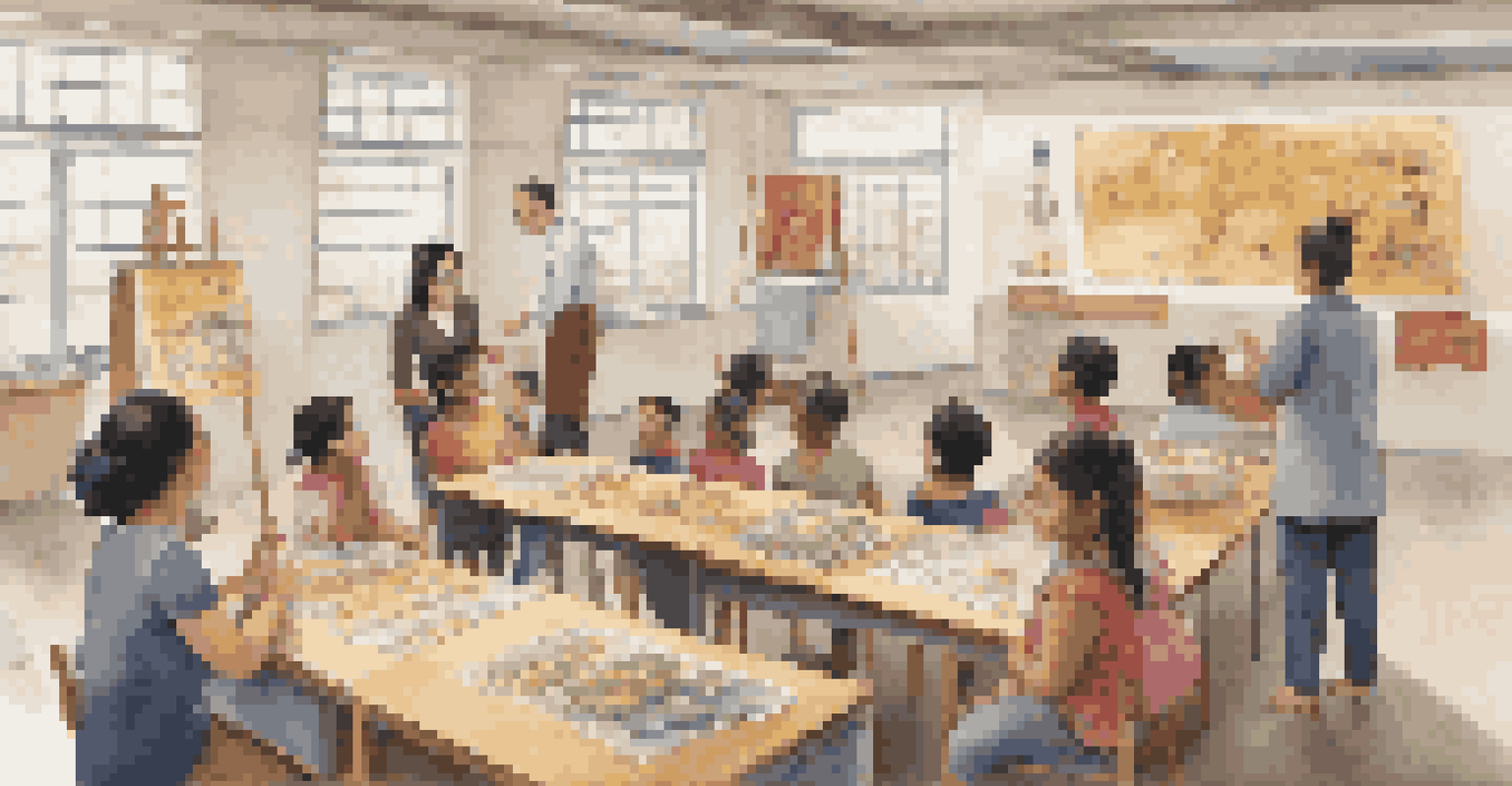Creating Curriculum for Multilingual Learners in Diverse Settings

Understanding the Needs of Multilingual Learners
Multilingual learners come from a variety of linguistic and cultural backgrounds, making it essential to understand their unique needs. These students often possess varying levels of proficiency in the language of instruction, which can impact their learning experience. Recognizing these differences allows educators to tailor their approach, ensuring that every student feels included and supported in the learning environment.
The single most important factor in a child's education is the quality of the teacher, and that quality can be enhanced by understanding the diverse needs of multilingual learners.
For example, some students may be fluent in reading but struggle with speaking, while others might have strong conversational skills but find academic language challenging. By identifying these specific areas, teachers can create targeted strategies that foster language development. This understanding not only enhances academic performance but also boosts students' confidence and engagement in learning.
Ultimately, taking the time to understand the diverse needs of multilingual learners is the first step towards creating an inclusive curriculum. This foundation paves the way for effective teaching practices that resonate with all students, regardless of their language background.
Incorporating Culturally Relevant Content
Culturally relevant content plays a crucial role in making curriculum accessible and engaging for multilingual learners. When students see their cultures and experiences reflected in the curriculum, they are more likely to connect with the material. This connection can lead to enhanced learning outcomes as students feel valued and understood in the classroom.

For instance, integrating stories, examples, and references from various cultures can enrich discussions and promote a deeper understanding of the subject matter. By drawing on students' backgrounds, educators can create a more vibrant and dynamic learning environment. This approach not only fosters academic achievement but also helps build a sense of community among diverse learners.
Understanding Learner Diversity
Recognizing the unique language proficiencies of multilingual learners enables educators to tailor their teaching approaches effectively.
Additionally, incorporating culturally relevant content can encourage students to share their perspectives, leading to a richer educational experience for everyone. When students contribute their unique insights, it cultivates a classroom atmosphere that celebrates diversity and promotes mutual respect.
Employing Differentiated Instruction Strategies
Differentiated instruction is key when developing curriculum for multilingual learners. This approach involves tailoring teaching methods, materials, and assessments to meet the diverse needs of students. By using various instructional strategies, educators can ensure that each learner receives the support they require to succeed.
Education is not the filling of a pail, but the lighting of a fire; understanding each student's unique background can ignite that fire.
For example, teachers might use visual aids, hands-on activities, or collaborative group work to cater to different learning styles and language proficiencies. This flexibility allows students to engage with the material in ways that resonate with them. Moreover, providing options in how students demonstrate their understanding can also enhance motivation and confidence.
Ultimately, employing differentiated instruction fosters an inclusive learning environment where all students feel empowered to participate and thrive. By recognizing and addressing individual needs, educators can help multilingual learners reach their full potential.
Utilizing Technology to Support Learning
Technology can be a powerful ally in creating curriculum for multilingual learners. With a plethora of tools available, educators can enhance language acquisition and engage students in new ways. From language learning apps to interactive online resources, technology can provide personalized support for each learner's needs.
For instance, platforms that offer translation services or language practice can help bridge gaps in understanding. Additionally, using multimedia presentations can cater to various learning preferences, making the content more accessible and exciting. By incorporating technology, teachers can create a more dynamic and interactive learning experience.
Importance of Culturally Relevant Content
Incorporating diverse cultural perspectives in the curriculum fosters connection and engagement among multilingual learners.
Furthermore, technology can facilitate collaboration among students, allowing them to work together regardless of their language proficiency. This collaborative approach not only enhances learning but also fosters social connections, helping to build a sense of community within a diverse classroom.
Creating a Supportive Classroom Environment
A supportive classroom environment is essential for the success of multilingual learners. This includes fostering a culture of respect, understanding, and encouragement among all students. When learners feel safe and valued, they are more likely to take risks and engage in their education.
Establishing clear expectations and routines can help create a structured environment that benefits all students. Additionally, celebrating cultural diversity through events or activities can promote inclusivity and build a sense of belonging. When students see their backgrounds honored, it reinforces their identity and boosts their confidence.
Moreover, creating opportunities for peer support can further enhance the learning experience. By pairing multilingual learners with native speakers or creating buddy systems, educators can help facilitate language development and social integration. This supportive network can make a significant difference in students' academic journeys.
Assessing Progress and Adapting Curriculum
Regular assessment is crucial in determining the effectiveness of your curriculum for multilingual learners. By monitoring students' progress, educators can identify areas where additional support may be needed. This ongoing evaluation allows for timely adjustments to the curriculum, ensuring it remains relevant and effective.
For example, formative assessments such as quizzes, discussions, or projects can provide valuable insights into students' understanding and language development. Analyzing this data can help educators adapt their teaching strategies and materials to better meet the needs of their learners. Furthermore, involving students in the assessment process can empower them to take ownership of their learning.
Engaging Families Enhances Success
Building partnerships with families and communities supports multilingual learners and enriches their educational experience.
Ultimately, the goal is to create a responsive curriculum that evolves based on the needs of students. By being flexible and open to change, educators can better support multilingual learners in achieving their academic goals.
Engaging Families and Communities
Engaging families and communities is vital in supporting multilingual learners. Building strong partnerships between home and school can enhance students' educational experiences and foster a sense of belonging. When families are involved, students are more likely to succeed both academically and socially.
For instance, schools can organize workshops or informational sessions that help families understand the curriculum and support their children's learning at home. Providing resources in multiple languages can also help bridge communication gaps and encourage participation. By making families feel included, educators can create a supportive network that benefits students.

Additionally, connecting with community organizations can provide further resources and opportunities for multilingual learners. When schools and communities work together, they create a holistic support system that nurtures students' growth and development.